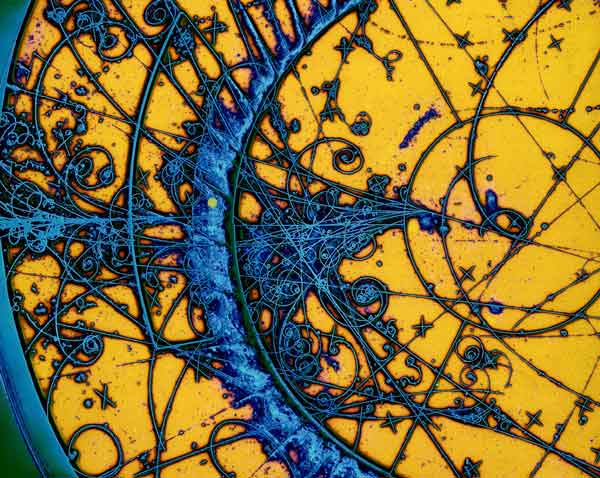Tackling gravitational wave inference with large language models
The analysis of gravitational wave data poses many challenges, for instance the analysis of overlapping signals, and signals overlapping with non-stationary noise. My research group works on new simulation-based inference methods that exploit the capability of artificial neural networks in order to tackle these difficult analysis challenges. The techniques have been very successful already, but require typically the development of dedicated embedding networks that are data specific. Interestingly, large language models like ChatGPT exhibit enormous capabilities in terms of writing computer codes, including the design of neural networks. This project is about tackling important analysis challenges in GW reserach by exploring whether it is possible to develop high-quality data analysis pipelines predominantly through interaction with a large language model.
Interested students should have some basic background in python, statistics and/or machine learning. However, part of the project will be to explore how efficiently additional knowledge can be acquired by interaction with a large language model. The project is embedded in a vibrant research group with international recognition for its work on deep-learning based analysis strategies for astroparticle physics and cosmological data.
Fast and robust image analysis with simulation-based inference - Reconstructing black hole images and videos
Image analysis tasks are omnipresent in astrophysics and cosmology. During the project, the student will learn how to use new image analysis strategies that were developed in my group, and that are based on the sequential training of deep neural networks in order to map noisy data on denoised images or videos. The student will explore whether these techniques are capable to reconstruct time varying radio data. Goal is to eventually apply these techniques to the reconstruction of M87 images from EHT data.
Interested students should have some basic background in python, statistics and/or machine learning. However, part of the project will be to explore how efficiently additional knowledge can be acquired by interaction with a large language model. The project is embedded in a vibrant research group with international recognition for its work on deep-learning based analysis strategies for astroparticle physics and cosmological data.
Reconstructing the initial density field and fNL with simulation-based techniques
Determining the mechanisms of the inflationary period in the early Universe is one of the open research questions in observational cosmology. The goal of this project is to explore topological data analysis and simulation-based inference techniques in order to measure signs of local non-Gaussianty in cosmological data. As part of the project, we will employ techniques that reconstruct the initial conditions of the Universe, in order to perform targeted simulations for our concrete Universe realisation. These techniques are building on a new simulation-based inference approach - using deep learning techniques - that was developed in my group. The approach has been already successfully applied in the context of cosmology and astroparticle physics.
Interested students should have a good understanding of theoretical cosmology, and ideally basic knowledge in python code and/or statistics. The project is embedded in a vibrant research group with international recognition for its work on deep-learning based analysis strategies for astroparticle physics and cosmological data.
Team
Dark matter distribution at small scales
Nature of particle dark matter is still under intense debate, and depending on its particle property, it yields different distribution pattern at small scales (i.e., scales smaller than galaxies). If dark matter is made of "cold" particles as is conventionally assumed, then dark matter structure forms hierarchically from small to large scales. This means that a large dark matter halo contains many smaller subhalos. On the other hand, if dark matter is made of "warm" particles, then their higher velocity dispersion washes away smaller structures, suppressing the number of subhalos. By comparing with various observations, one can constrain various properties of dark matter particles.
I offer several projects on the studies of small-scale dark matter distribution as follows.
- Inner cups at the center of halos and subhalos. It has been pointed out that a steep cusp at halo center might survive against merger and accretion processes. The presence of such cusps will increase the rate of annihilation of dark matter particles if they annihilate at all. Since halos are made of smaller subhalos, this means a strong enhancement of the rate of dark matter annihilation in each halo. The purpose of this project is to accurately compute the rate of annihilation by adopting the semi-analytical subhalo models, SASHIMI.
Light dark matter searches with X rays
Light Dark Matter (DM) [with a mass between 1 MeV to 1 GeV], provides an intriguing theoretical and phenomenological possibility within current DM research. Candidates for which the DM interaction cross-section is velocity-suppressed are well motivated but need better study. Furthermore, the scarcity of experiments in the MeV-GeV region makes indirect detection via gamma rays difficult. This project aims to address these issues by studying lower-energy X-ray data from various telescopes. Crucially, we plan to include state-of-the-art DM distribution models of dark matter in the center of the Galaxy and the contribution from inverse Compton scattering on galactic radiation fields and the CMB. We expect to obtain much stronger constraints than in previous studies for DM masses above 20 MeV.
Projects at the intersection of dark matter research and machine learning
My group is working on searches for signals from particle dark matter using a wide range of astrophysical observations. Examples include the search for radio line emission from neutron stars caused by the resonant conversion of QCD axion dark matter into photons in the magnetosphere, and the analysis of strong lensing images to study the substructure of dark matter. To this end, we develop our own analysis tools that are based on the latest developments in machine learning and deep probabilistic programming.
We are looking for students who are interested to acquire skills in the development and application of deep learning techniques to unravel the nature of dark matter (for instance distinguishing warm from cold dark matter) using astrophysical data (for instance radio data from MWA, optical data from HST, mock data for ELT, gamma-ray data from Fermi LAT, neutrino data from IceCube, or even LHC data), or in improving the simulation and modeling of dark matter in the Universe using modern data science tools (for instance simulation of stellar streams, simulation of dark matter axion-to-photon conversion in neutron stars).
Concrete projects will depend on the interests and skills of the student. Prior knowledge of machine learning (with Python or Julia) and/or statistical methods is a plus, but this can be also acquired during the project.
Literature:
https://inspirehep.net/literature/1969864 https://inspirehep.net/literature/1858891 https://inspirehep.net/literature/2085207
Fast Radio Bursts
Fast Radio Bursts are one of the most mysterious objects in astrophysics. First found in observations by accident in 2007, they are observed as extraordinarily bright flashes of milli-second duration, most of them in far-away galaxies. We don’t know what they are, or what produces them. A steadily and rapidly growing data set of observations lends itself to data-driven discovery, especially of the extremely rapid changes in brightness within these objects, but statistical and machine learning methods to take advantage of these data sets are very sparse. Thus, this is a project that will enable discovery at the very edge of astrophysics research.
Simulation-based inference
“Simulation-based inference is the next evolution in statistics.”
- Kyle Cramner (Popularized statistical methods for the discovery of the Higgs boson). Retweet by Kevin Patrick Murphy (author of Machine Learning: A Probabilistic Perspective).
Fast Radio Bursts can be modeled as the superposition of several short peaks of intense light. Consider the task of inferring the number of peaks θo contributing to an observed light curve xo of a Fast Radio Burst. We design a computer program that maps the number of constituent peaks θ to a simulated light curve x using relevant physical theory. Our simulator computes x from θ, but the inverse mapping is unspecified and likely intractable. Simulation-based inference puts this problem in a probabilistic context. Although we cannot analytically evaluate it, we assume that the simulator is sampling from the conditional probability distribution p(x | θ). After specifying a prior p(θ), the inverse amounts to estimating the posterior p(θ | xo). The posterior gives us a prediction of the number of peaks which could have contributed to the observed Fast Radio Burst. Our goal is to estimate this posterior using simulation-based inference.
Project Description
We will develop a new simulation-based inference technique which employs Reversible Jump Markov-chain Monte Carlo, aka the Metropolis-Hastings-Green algorithm, to sample from a custom simulator that models fast radio bursts using a variable number of peaks. We will compare results to likelihood-based methods using belief propagation and nested sampling.
Applicants for the thesis should have developed programming skills in python using pytorch and understand how to implement supervised learning tasks. Knowledge of hierarchical models and sampling using Markov-chain Monte Carlo is also desired.
Links
https://link.springer.com/article/10.1007/s00159-019-0116-6 https://www.pnas.org/doi/10.1073/pnas.1912789117 https://www.stat.umn.edu/geyer/f05/8931/bmhg.pdf
Team
LHCb: Search for light dark particles
The Standard Model of elementary particles does not contain a proper Dark Matter candidate. One of the most tantalizing theoretical developments is the so-called Hidden Valley models: a mirror-like copy of the Standard Model, with dark particles that communicate with standard ones via a very feeble interaction. These models predict the existence of dark hadrons – composite particles that are bound similarly to ordinary hadrons in the Standard Model. Such dark hadrons can be abundantly produced in high-energy proton-proton collisions, making the LHC a unique place to search for them. Some dark hadrons are stable like a proton, which makes them excellent Dark Matter candidates, while others decay to ordinary particles after flying a certain distance in the collider experiment. The LHCb detector has a unique capability to identify such decays, particularly if the new particles have a mass below ten times the proton mass.
This project assumes a unique search for light dark hadrons that covers a mass range not accessible to other experiments. It assumes an interesting program on data analysis (python-based) with non-trivial machine learning solutions and phenomenology research using fast simulation framework. Depending on the interest, there is quite a bit of flexibility in the precise focus of the project.
Team
Probing the origin of the proton spin with machine learning
At energy-frontier facilities such as the Large Hadron Collider (LHC), scientists study the laws of nature in their quest for novel phenomena both within and beyond the Standard Model of particle physics. An in-depth understanding of the quark and gluon substructure of protons and heavy nuclei is crucial to address pressing questions from the nature of the Higgs boson to the origin of cosmic neutrinos. The key to address some of these questions is by carrying out an universal analysis of nucleon structure from the simultaneous determination of the momentum and spin distributions of quarks and gluons and their fragmentation into hadrons. This effort requires combining an extensive experimental dataset and cutting-edge theory calculations within a machine learning framework where neural networks parametrise the underlying physical laws while minimising ad-hoc model assumptions. The upcoming Electron Ion Collider (EIC), to start taking data in 2029, will be the world's first ever polarised lepton-hadron collider and will offer a plethora of opportunities to address key open questions in our understanding of the strong nuclear force, such as the origin of the mass and the intrinsic angular momentum (spin) of hadrons and whether there exists a state of matter which is entirely dominated by gluons. To fully exploit this scientific potential, novel analysis methodologies need to be develop that make it possible to carry out large-scale, coherent interpretations of measurements from the EIC and other high-energy colliders.
In this project, the student will carry out a new global analysis of the spin structure of the proton by means of the machine learning tools provided by the NNPDF open-source fitting framework and state-of-the-art calculations in perturbative Quantum Chromodynamics, and integrate it within the corresponding global NNPDF analyses of unpolarised proton and nuclear structure in the framework of a combined integrated global analysis of non-perturbative QCD. Specifically, the project aims to realise a NNLO global fit of polarised quark and gluon PDFs that combines all available data and state-of-the-art perturbative QCD calculations, and study the phenomenological implications for other experiments, including the EIC, for the spin content of the proton, for comparisons with lattice QCD calculations, and for nonpperturbative models of hadron structure.
References: https://arxiv.org/abs/2201.12363, https://arxiv.org/abs/2109.02653, https://arxiv.org/abs/2103.05419, https://arxiv.org/abs/1404.4293, https://inspirehep.net/literature/1302398, https://github.com/NNPDF/
Team
High-energy neutrino-nucleon interactions at the Forward Physics Facility
High-energy collisions at the High-Luminosity Large Hadron Collider (HL-LHC) produce a large number of particles along the beam collision axis, outside of the acceptance of existing experiments. The proposed Forward Physics Facility (FPF) to be located several hundred meters from the ATLAS interaction point and shielded by concrete and rock, will host a suite of experiments to probe Standard Model (SM) processes and search for physics beyond the Standard Model (BSM). High statistics neutrino detection will provide valuable data for fundamental topics in perturbative and non-perturbative QCD and in weak interactions. Experiments at the FPF will enable synergies between forward particle production at the LHC and astroparticle physics to be exploited. The FPF has the promising potential to probe our understanding of the strong interactions as well as of proton and nuclear structure, providing access to both the very low-x and the very high-x regions of the colliding protons. The former regime is sensitive to novel QCD production mechanisms, such as BFKL effects and non-linear dynamics, as well as the gluon parton distribution function (PDF) down to x=1e-7, well beyond the coverage of other experiments and providing key inputs for astroparticle physics. In addition, the FPF acts as a neutrino-induced deep-inelastic scattering (DIS) experiment with TeV-scale neutrino beams. The resulting measurements of neutrino DIS structure functions represent a valuable handle on the partonic structure of nucleons and nuclei, particularly their quark flavour separation, that is fully complementary to the charged-lepton DIS measurements expected at the upcoming Electron-Ion Collider (EIC).
In this project, the student will carry out updated predictions for the neutrino fluxes expected at the FPF, assess the precision with which neutrino cross-sections will be measured, and quantify their impact on proton and nuclear structure by means of machine learning tools within the NNPDF framework and state-of-the-art calculations in perturbative Quantum Chromodynamics. This project contributes to ongoing work within the FPF Initiative towards a Conceptual Design Report (CDR) to be presented within two years. Topics that can be considered as part of this project include the assessment of to which extent nuclear modifications of the free-proton PDFs can be constrained by FPF measurements, the determination of the small-x gluon PDF from suitably defined observables at the FPF and the implications for ultra-high-energy particle astrophysics, the study of the intrinsic charm content in the proton and its consequences for the FPF physics program, and the validation of models for neutrino-nucleon cross-sections in the region beyond the validity of perturbative QCD.
References: https://arxiv.org/abs/2203.05090, https://arxiv.org/abs/2109.10905, https://arxiv.org/abs/2208.08372, https://arxiv.org/abs/2201.12363, https://arxiv.org/abs/2109.02653, https://github.com/NNPDF/
Team
Effective Field Theories of Particle Physics from low- to high-energies
Known elementary matter particles exhibit a surprising three-fold structure. The particles belonging to each of these three “generations” seem to display a remarkable pattern of identical properties, yet have vastly different masses. This puzzling pattern is unexplained. Equally unexplained is the bewildering imbalance between matter and anti-matter observed in the universe, despite minimal differences in the properties of particles and anti-particles. These two mystifying phenomena may originate from a deeper, still unknown, fundamental structure characterised by novel types of particles and interactions, whose unveiling would revolutionise our understanding of nature. The ultimate goal of particle physics is uncovering a fundamental theory which allows the coherent interpretation of phenomena taking place at all energy and distance scales. In this project, the students will exploit the Standard Model Effective Field Theory (SMEFT) formalism, which allows the theoretical interpretation of particle physics data in terms of new fundamental quantum interactions which relate seemingly disconnected processes with minimal assumptions on the nature of an eventual UV-complete theory that replaces the Standard Model. Specifically, the goal is to connect measurements from ATLAS, CMS, and LHCb experiments at the CERN's LHC among them and to jointly interpret this information with that provided by other experiments including very low-energy probes such as the anomalous magnetic moment of the muon or electric dipole moments of the electron and neutron.
This project will be based on theoretical calculations in particle physics, numerical simulations in Python, analysis of existing data from the LHC and other experiments, as well as formal developments in understanding the operator structure of effective field theories. Depending on the student profile, sub-projects with a strong computational and/or machine learning component are also possible, for instance to construct new operators with optimal sensitivity to New Physics effects as encoded by the SMEFT higher-dimensional operators. Topics that can be considered in this project include the interpretation of novel physical observables at the LHC and their integration into the global SMEFiT analysis, matching of EFTs to UV-complete theories and their phenomenological analyses, projections for the impact in the SMEFT parameter space of data for future colliders, the synergies between EFT studies and proton structure fits, and the matching to the Weak Effective Field Theory to include data on flavour observables such as B-meson decays.
References: https://arxiv.org/abs/2105.00006, https://arxiv.org/abs/2302.06660, https://arxiv.org/abs/2211.02058, https://arxiv.org/abs/1901.05965, https://arxiv.org/abs/1906.05296, https://arxiv.org/abs/1908.05588, https://arxiv.org/abs/1905.05215




